Results 8,841 to 8,850 of 12096
Thread: Anandtech News
-
11-15-18, 10:29 AM #8841
Anandtech: The AMD Radeon RX 590 Review, feat. XFX & PowerColor: Polaris Returns (Aga
When AMD launched the Polaris-based Radeon RX 480 in June 2016, the focus was firmly on the mainstream market, looking to offer superior value over raw performance. At the same time, AMD also sought to improve power efficiency by leveraging both microarchitectural changes and their first generation of FinFET GPUs. Ultimately, this straightforward approach was somewhat derailed by the recent cryptocurrency mining craze, but Polaris has carried on, appearing in consoles (Xbox One X and PS4 Pro) as well as an early 2017 refresh in the form of the Radeon RX 500 series. Launching today is the latest entry with new top offering in the RX 500 series: the AMD Radeon RX 590.
More...
-
11-15-18, 07:50 PM #8842
Anandtech: ADATA Reveals Ultimate SU630 SSD: 3D QLC for SATA
ADATA has introduced its new entry-level SSD for client PCs. The Ultimate SU630 is the first drive from an independent maker of SSDs based on 3D QLC NAND, which is an indicator that the new type of flash memory is finally to the point in terms of production and reliability that companies like ADATA can offer it to their customers, albeit with only a two-year warranty. Notably, the drive is also among the first SATA-based QLC SSDs.
Aimed at entry-level PCs, ADATA’s Ultimate SU630 drives come in a 2.5-inch form-factor and feature 240 GB, 480 GB, and 960 GB configurations. The company says that the Ultimate SU630 SSDs support sequential read performance up to 520 MB/s as well as sequential write performance up to 450 MB/s when pseudo-SLC caching is enabled, based on numbers obtained using the ATTO benchmark. Interestingly, the 240 GB version is not slower than higher-capacity models. As for random performance numbers, the Ultimate SU630 is capable of up to 40,000 read and up to 65,000 write IOPS in case of the 480 GB and 960 GB SKUs.
Moving on to the endurance of the ADATA Ultimate SU630 drives, the 240 GB version is rated for 50 TBW (TB Written), whereas the higher-capacity 480 GB and 960 GB models are rated for 100 and 200 TBW, respectively. To put this in perspective, these endurance ratings are one-third those of ADATA's entry-level 3D TLC NAND-based drives. This is not exactly surprising considering the peculiarities of QLC NAND memory in general. In fact, Crucial P1 SSDs are rated even lower, though the company a five-year warranty on its QLC drives. Meanwhile, ADATA ships its QLC-based drives with just a two-year warranty, which happens to be the minimum allowable warranty in Europe.
ADATA does not disclose the controller it uses for the Ultimate SU630 SSDs, nor the supplier of 3D QLC memory being used. Keeping in mind how close the company works with Micron, it is more than likely ADATA is buying their QLC NAND from the latter. As for the controller, so far we have only seen two SATA SSD controllers that are officially capable of handling QLC: Maxio Technology’s MAS0902A-B2C and Phison’s PS3111-S11T. Since Phison usually delivers turn-key SSD solutions with its controllers (i.e., fully assembled drives), ADATA has not been working with this company, which leaves Maxio as the most likely provider of QLC-supporting SATA SSD controller for ADATA.ADATA Ultimate SU630 Specifications Capacity 240 GB 480 GB 960 GB Model Number ASU630SS-240GQ-R ASU630SS-480GQ-R ASU630SS-960GQ-R Controller Maxio Technology MAS0902A-B2C (?) NAND Flash 64-layer 3D QLC NAND Form-Factor, Interface 2.5-inch/7-mm, SATA 6 Gbps Sequential Read 520 MB/s Sequential Write 450 MB/s Random Read IOPS 30K 40K Random Write IOPS 65K Pseudo-SLC Caching Supported DRAM Buffer No AES Encryption unknown Power Management unknown Warranty 2 years MTBF 1,500,000 hours TBW 50 TB 100 TB 200 TB DWPD 0.28 0.28 0.28 MSRP $49.99 $79.99 $139.99
Overall this is exactly the kind of drive we've come to expect from ADATA. The company has shown that it's not afraid of experimenting with new SSD controllers and NAND memory, and as a result they have dozens of products aimed at a variety of market segments, including niche ones. ADATA was the first independent maker of SSDs to offer drives based on 3D NAND several years ago. With its Ultimate SU630 the company comes up with multiple firsts: it is the first 3D QLC-based SSD from a well-known independent manufacturer, it is the first 3D QLC-based drive with a SATA interface, it is the first QLC SSD (likely) powered by Maxio’s MAS0902A controller from a popular brand. Meanwhile, ADATA makes no secret that the Ultimate SU630 is positioned as its cheapest SATA SSD: the drive formally sits below the Ultimate SU650/SU655, SU700, SU800, SU900, and XPG SX950U products, some of which are three years old.
Time to talk about pricing of the Ultimate SU630. ADATA plans to sell the 240 GB model for $49.99, the 480 GB model for $79.99, and the 960 GB version for $139.99. Keeping in mind that street prices are usually below MSRPs, recommended prices of the new drives look competitive against other cheap SSDs. In the meantime, when acquiring such products one should keep in mind that their endurance is below that of many other inexpensive drives available today.
Related Reading:
- The Crucial P1 1TB SSD Review: The Other Consumer QLC SSD
- Phison: PS5012-E12 Controller in Mass Production, 20+ SSDs Incoming
- The Intel SSD 660p SSD Review: QLC NAND Arrives For Consumer SSDs
- Samsung Discloses First Details About QLC-Based Client & Server SSDs
- We Found a Prototype 4 TB Intel QLC SSD
Source: ADATA
More...
-
11-15-18, 08:53 PM #8843
Anandtech: NVIDIA Announces Q3 FY 2019 Results: Lots Of Stock
This afternoon, NVIDIA announced their earnings for the third quarter of their 2019 fiscal year. Revenue was up 21% year-over-year to $3.181 billion. NVIDIA had margins this quarter of 60.4%, up 0.9% from the same time last year. Operating income for the quarter was $1.058 billion, up 18% from a year ago, and due to a booked tax benefit of $149 million, net income was $1.23 billion, up 47% from a year ago. Earnings per share came in at $1.97, up 48%.
Gaming revenue is still by far the largest part of NVIDIA’s earnings, with gaming revenue up 13% year-over-year to $1.764 million. NVIDIA of course released the GeForce RTX lineup this quarter, leapfrogging itself to remain at the top of the performance charts. However due to the quick fall of crypto currency, NVIDIA does have excess channel inventory of its older products due to vendors overstocking to try and keep up with the crypto boom which fell off so suddenly, but they expect to clear out that inventory soon.NVIDIA Q3 2019 Financial Results (GAAP) Q3'2019 Q2'2018 Q3'2018 Q/Q Y/Y Revenue $3181M $3123M $2636M +2% +21% Gross Margin 60.4% 63.3% 59.5% -2.9% +0.9% Operating Income $1058M $1157M $895M -9% +18% Net Income $1230M $1101M $838M +12% +47% EPS $1.97 $1.76 $1.33 +12% +48%
Professional visualization had revenues of $305 million for the quarter, up 27.6% from Q3 2018. NVIDIA released Quadro RTX based on the new Turing architecture.
NVIDIA’s Datacenter group continues its rapid growth, delivering revenue of $792 million this quarter, up from $501 million a year ago, or a 58% gain. The company has delivered a lot of new products in this space over the last year, and has done an amazing job of delivering platforms for the fastest growing areas of computing.
Automotive based revenue was $172 million for the quarter, up 19.4% from Q3 2018. The company has achieved design wins for level-2 autopilot with Toyota, Volvo, and Isuzu, and have started production on Xavier which is the first single-chip autopilot SoC.
OEM & IP revenue was $148 million for the quarter, down from $191 million a year ago.
Looking ahead to Q4 2019, NVIDIA is expecting revenues of $2.7 billion, plus or minus 2%. That would compare to $2.9 billion in Q4 2018.NVIDIA Quarterly Revenue Comparison (GAAP)
($ in millions)In millions Q3'2019 Q2'2018 Q3'2018 Q/Q Y/Y Gaming $1764 $1805 $1561 -2.3% +13.0% Professional Visualization $305 $281 $239 +8.5% +27.6% Datacenter $792 $760 $501 +4.2% +58.1% Automotive $172 $161 $144 +6.8% +19.4% OEM & IP $148 $116 $191 +27.6% -22.5%
Source: NVIDIA Investor Relations
More...
-
11-16-18, 07:29 AM #8844
Anandtech: The Mate 20 & Mate 20 Pro Review: Kirin 980 Powering Two Contrasting Devic
As far as handset vendors go, Huawei holds special importance to me. Their devices were among the first that I ever reviewed here on AnandTech, and the Mate series has been one that I’ve personally watched while it has evolved over the years. There’s been ups and downs in their products, but Huawei always showed a consistent amount of progress with each generation, raising the quality of the product, inching ever closer to making themselves a household name among smartphone vendors.
The Mate 20 and Mate 20 Pro are Huawei’s latest attempts to push the envelope in terms of creating symbolic flagship devices. In this review, we’ll go over all the aspects of the two new phones – and see if Huawei has managed to create something that is worth of your purchase.
More...
-
11-16-18, 07:29 AM #8845
Anandtech: PCI-SIG Warns Of Incompatibilities Between M.2 And Samsung's NGSFF/NF1
PCI-SIG, the standards committee behind PCI Express and related standards, has issued a warning about incompatibilities between their M.2 standard and Samsung's NGSFF/NF1 SSD form factor. The notice from PCI-SIG does not refer to Samsung by name, but does indirectly call them out for basing a new form factor on a mechanically identical M.2 connector without introducing a new keying option to prevent improper insertion of M.2 drives into NGSFF slots or vice versa.
Samsung's NGSFF form factor was unveiled in 2017 as a proposed replacement for M.2 and U.2 SSDs in datacenter applications. The goals are similar to the competing EDSFF standards derived from Intel's Ruler: provide more power than can be delivered over M.2's 3.3V supply, allow hot-swapping of cards, and widen the cards beyond the typical 22mm to allow for two rows of NAND flash packages side by side. Samsung's standard re-uses almost all of the data and ground pin assignments from M.2, but removes the 3.V supply and adds 12V power elsewhere.
Samsung was initially hoping to call their standard M.3, but from what we've heard from unofficial sources this was going to make PCI-SIG very unhappy, so Samsung made a last-minute name change to NGSFF before going public. Not all of their partners got the message, and even Samsung's own exhibits did not quite have all traces of "M.3" thoroughly erased. Since then, Samsung has pursued standardization through JEDEC with a new name of NF1 for the form factor, but that effort seems to have stalled earlier this year without achieving ratification. However, even without standardization, Samsung has been moving forward with deployment of NGSFF SSDs and they have picked up several major partners along the way, including OEMs like Supermicro and AIC.
PCI-SIG's complaints about NGSFF are all about conflicting pin assignments for the M.2 M-keyed connector. In order to add 12V power and PCIe dual-port capability, Samsung had to make use of many previously-unassigned pins that existing M.2 drives and sockets leave disconnected. Several of Samsung's new pin assignments conflict with new assignments for the forthcoming M.2 revision 1.2 specification, which will add an optional set of USB 2.0 data lines and the option of a 1.8V power supply and lower-voltage signaling on some control lines. The warning from PCI-SIG neglects to mention that some of these conflicts are still largely hypothetical and is written as if the 1.2 revision of the M.2 spec were already finalized, though it is expected to be complete by the end of this year.
Some of the pin assignment conflicts pose a risk even with currently extant products. For example, NGSFF SSDs have a ground connection on pin 20, adjacent to pin 18 where M.2 sockets provide 3.3V power, so an NGSFF SSD inserted into a standard M.2 socket is just one bent pin away from a short circuit. (There's a more serious conflict in the other direction with the upcoming M.2 standard, which adds a ground connection on one of the same pins that Samsung is using for 12V.) There are also five pins that NGSFF uses which are still unassigned even in revision 1.2 of the M.2 spec, and thus leave the door open for more future conflicts.
The incompatibilities between M.2 and NGSFF may develop into a serious problem, but as things currently stand the warnings from PCI-SIG are a bit overblown. Some degree of electrical compatibility between NGSFF and the current M.2 revision 1.1 is possible, proving that there is some utility to Samsung's re-use of the same mechanical connector with a similar pin-out. Minerva, Taiwanese makers of almost every kind of storage adapter possible, has several adapters that provide slots capable of accepting M.2 and "M.3" NGSFF SSDs. These adapters are safe to use with M.2 SSDs that adhere to the current spec and do not connect the unassigned pins that Samsung uses to deliver 12V power, but could cause problems with upcoming M.2 revision 1.2 cards (and are subject to the adjacent 3.3V and ground pin risk mentioned above).
More importantly, real-world mistakes between M.2 and NGSFF are unlikely given the typical use-case for NGSFF SSDs: as hot-swappable drives mounted to trays that do not accept M.2 SSDs. Putting a NGSFF SSD into a M.2 socket will usually require removing the drive from the tray. Putting a M.2 SSD into a NGSFF socket without a tray to guide it would be difficult. Most of the opportunities for a dangerous mismatch come when using adapters from other connectors (eg. PCIe x4 slot) to M.2 or NGSFF, and current adapters avoid most of the risk of damage. The existence of Samsung's NGSFF form factor may serve as a deterrent to adoption of M.2 revision 1.2 features, though it seems that those new features are unlikely to have much market overlap with the strictly datacenter-oriented NGSFF. And if the EDSFF standards win out over NGSFF, then Samsung's form factor may end up being rather short-lived before falling into obscurity.
More...
-
11-16-18, 10:12 AM #8846
Anandtech: Intel Partner Discloses Cascade Lake Xeon Scalable Launch Window
This week at Supercomputing, everyone is getting excited about next generation hardware, not only on x86 but also GPUs, POWER, Arm, FPGAs, and accelerators. The danger of having so many partners trying to get business for their products and discuss future generations of products is that not everything is qualified through the original manufacturers and leaks are made. This is one such leak.
More...
-
11-16-18, 03:00 PM #8847
Anandtech: ASUS Launches Zen AiO 27 Z272SD: New Design, 4K, Six-Core CPU, dGPU, 32 GB
ASUS has quietly added a new premium Zen AiO desktop to its lineup of all-in-one PCs. The latest high-end Zen AiO significantly improves in performance over the predecessor in almost all aspects, including the display, processor, discrete GPU, memory, storage subsystem, and so on. Furthermore, the new Zen AiO features a radically new design that enables its advanced capabilities.
ASUS launched its first AIO PCs with 22 and 24-inch displays and an iMac-like design in mid-2015, targeting casual users looking for style and “good enough” performance. Since then, ASUS has been expanding its lineup of all-in-one desktops with higher-performance Zen AiO systems, more affordable Vivo AiO PCs, AiO Pro machines aimed at demanding users, and so on. All of these products used a similar iMac-like design with all of its pros and cons. With the latest Zen AiO 27 Z272-series the manufacturer switches to a brand-new design concept that places compute hardware into the PC’s base (we have already seen something similar from HP), which allows to use higher-performance components and enables ASUS to make an adjustable stand, a rare feature on AIO PCs. Meanwhile, the new system comes in ASUS’s signature Deep Dive Blue aluminum body with a brushed metal effect-finish and Rose Gold accents on edges, so from the style point of view the new AIO looks very impressive and matches design of ASUS’s premium ZenBook laptops.
As the model number implies, the ASUS Zen AiO 27 Z272SD comes with a 27-inch multi-touch IPS display panel featuring a 4K Ultra-HD resolution, covering 100% of the sRGB color gamut, and factory calibrated to Delta E < 2 accuracy. ASUS will also offer a display panel with a Full-HD resolution, though for select markets only. Because of the new system layout, the monitor can adjust its height, tilt and swivel. For some reason ASUS placed its Windows Hello-compatible 1 MP webcam with IR sensors and a microphone array below the display panel, a location found unfortunate in case of laptops.
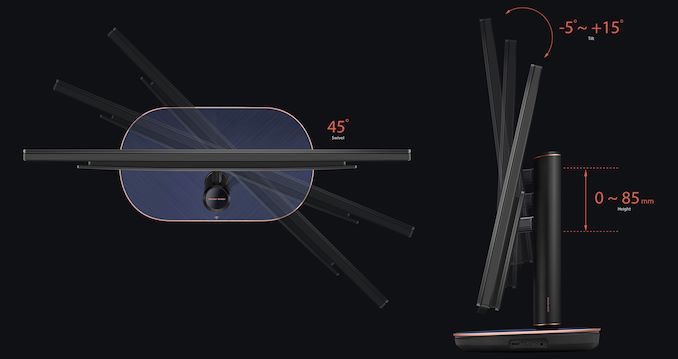
The Zen AiO 27 Z272SD is based on up to Intel’s six-core Core i7-8700T CPU paired with the B360 PCH and accompanied by NVIDIA’s GeForce GTX 1050 GPU with 4 GB GDDR5 memory, which is a significant upgrade when compared to the previous-generation Zen AiO ZN270IE system (quad-core Core i7-7700 and GeForce GTX 940MX). The new Zen AiO PC will come with 8 GB – 32 GB of DDR4-2400 memory, a 128 GB – 1 TB SSD (PCIe or SATA), and an up to 2 TB hard drive. Select configurations may also feature an Intel Optane Memory caching SSD to cut down costs while retaining SSD-like responsiveness.
Next up is I/O. On the wireless side of things, the Zen AiO 27 Z272SD feature dual-band 2x2 802.11ac Wi-Fi as well as Bluetooth 5. As for physical ports, the PC is equipped with a GbE jack, three USB Type-A ports, one Thunderbolt 3 port (up to 20 Gbps), HDMI input & output (with a switch button), a TRRS audio connector, a microSD card reader and so on. In theory, the TB3 port enables owners to use external graphics and storage subsystems with their AIOs, but since ASUS had to limit bandwidth of the port to 20 Gbps aggregate, it is not guaranteed that bandwidth-hungry devices will perform as expected.

Moving on to audio. ASUS and other makers of premium all-in-one PCs these days pay a special attention to sound subsystems of their products as they naturally want to provide a premium multimedia experience without requiring their customers to use external audio (which is complicated due to presence of only one audio connector). The ASUS Zen AiO 27 Z272SD is outfitted with a quad-speaker system featuring 300-cc sound chambers and co-designed with harman/kardon.
ASUS plans to start selling premium versions of the Zen AiO 27 Z272SD this month. MSRPs for the U.S. market are unknown, but in Japan the system will cost ¥250,000 ($2,206) excluding taxes.General Specifications of ASUS Zen AiO 27 Z272-Series Zen AiO 27 Z272SD Display 27" with 3840×2160 resolution with or without multi-touch
27" with 1920×1080 resolution with or without multi-touchCPU Intel Core i7-8700T
6C/12T
2.4 - 4 GHz
12 MB LLC
35 WGraphics NVIDIA GeForce GTX 1050 with 4 GB of GDDR5 memory Memory 8, 16, or 32 GB DDR4-2400 (dual channel, two modules) Storage SSD 16 GB Intel Optane Memory
128 GB SATA SSD
256 GB SATA SSD
512 GB PCIe SSD
1 TB PCIe SSDHDD 1 TB 2.5-inch HDD
2 TB 2.5-inch HDDWi-Fi IEEE 802.11ac Wi-Fi + BT 5 Ethernet GbE Display Outputs Thunderbolt 3 (20 Gbps)
HDMI input
HDMI outputAudio Quad-speaker audio subsystem
Integrated microphonesUSB 4 × USB 3.0 Type-A (5 Gbps)
1 × USB 3.1 Gen 2 Type-C (via TB3)Other I/O 1 MP webcam with IR
microSD card readerDimensions Width 62.7 cm | 24.68" Height 52.3 cm | 20.59" Depth 1.99 cm | 0.78" Stand Height 0 ~ 85 mm Tilt -5º ~ +15º Swivel 45º PSU ~ 180 W OS Windows 10 with Amazon Alexa
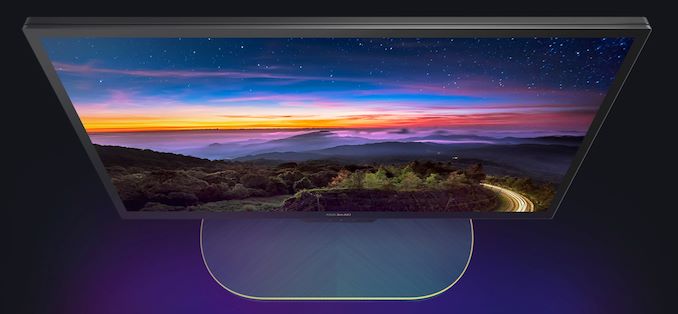
Related Reading:
- ASUS Launches the Zen AiO ZN270IE: A 27-inch Full HD Core i7 All-In-One
- HP Upgrades EliteOne 1000 All-In-Ones with Coffee Lake CPUs
- HP 2018 Envy 34-Inch Curved All-in-One Gets Cozier
- HP Envy 27-Inch AIO Updates: Six-Core Coffee Lake, 4K Display, NVMe
Source: ASUS, PC Watch
More...
-
11-16-18, 03:00 PM #8848
Anandtech: SK Hynix Reveals DDR4-3200 Memory Chips with 4 Phase Clocking
SK Hynix this week announced that it has completed development of its latest-generation DDR4 memory chips. The new DRAM chips are made using the company’s second-generation 10 nm-class fabrication technology (1Ynm) and feature a number of enhancements designed to cut-down die sizes, reduce power consumption, and improve their frequency potential.
At a high level, the new 8 Gb DDR4-3200 chips consume 15% less power than the company's first-generation (1Xnm) DDR4-3200 devices. The process node bump means that their die size has also been reduced by around 20%, which will eventually help to drive down their costs. Initially, SK Hynix will use its 1Ynm technology to make memory chips aimed at servers and client PCs, but eventually the same tech will be applied to LPDDR memory for mobile devices.
In addition to smaller die size and lower power consumption, SK Hynix’s newly developed 8 Gb DDR4-3200 chips feature two important enhancements: a 4-Phase Clocking scheme as well as the Sense Amplifier Control technology. The 4-Phase Clocking increases signal strength to maintain stability at high data transfer rates. Meanwhile, the SAC lowers possibility of data errors that may occur when transistor sizes shrink.
The new DRAM devices from SK Hynix are the first memory chips to incorporate a quad-phase clocking scheme. While SK Hynix conservatively rates the new chips at DDR4-3200, the quad-phase clocking enhancement may potentially enable a higher overclocking potential, though this is something that has to be tested.
SK Hynix has not yet started mass production of DDR4 chips using its second-generation 10 nm-class fabrication technology. Keeping in mind that even the current-gen DDR4-3200 chips are listed as “sampling” at the company’s website, it is likely that the new chips will hit mass production in 2019.
Related Reading:
- SK Hynix Lays Out Plans for 2017: 10nm-Class DRAM, 72-Layer 3D NAND
- Samsung Starts Production of 8 Gb DDR4-3600 ICs Using 2nd Gen 10nm-Class Tech
- Samsung Begins To Produce DDR4 Memory Using '10nm Class' Process Tech
- Samsung & SK Hynix Graphics Memory Prices Increase Over 30% In August
- SK Hynix Announces 8 GB LPDDR4X-4266 DRAM Packages
More...
-
11-16-18, 04:09 PM #8849
Anandtech: ASUS P11C-I: Intel C242-Based Motherboard for Xeon E Mini ITX Servers w/Op
ASUS has started sales of a low-cost motherboard for Intel Xeon E-series processors that's aimed at miniature servers. Based on a yet unannounced chipset, the P11C-I platform comes in the Mini ITX form-factor, so it can fit into very small chassis and/or ensure maximum density in a rack. Meanwhile, the mainboard supports up to eight storage devices out-of-box and up to 15 storage devices when outfitted with an optional ASUS PIKE II SAS card.
The ASUS P11C-I motherboard is based on Intel’s yet unannounced C242 chipset (probably a low-cost version of Cannon Point-H WS) and supports Intel’s Xeon E-2100-series CPUs for entry-level servers, as well as Intel’s 8th Gen Core i3/i5/i7 chips along with their inexpensive Pentium Gold and Celeron counterparts. The motherboard features a quad-phase CPU VRM capable of 95 W that uses solid-state inductors and capacitors to sustain stable operation during prolonged workloads. The P11C-I has two DRAM slots supporting up to 32 GB of DDR4-2667 memory with or without ECC.
The storage capabilities of the ASUS P11C-I are something that clearly deserves mentioning. The motherboard has one M.2 PCIe 2.0 x2 slot for an SSD, six SATA 6 Gbps ports (four via Mini-SAS connectors), and a PCIe 3.0 x16 slot for a high-end SSD. Meanwhile, the latter can accommodate ASUS’s PIKE II 3008-8i 8-port SAS 12G RAID or PIKE II 3108-8i 8-port SAS 12G HW RAID controllers, which use a PCIe 3.0 x8 interface and provide eight SAS ports for storage devices. Therefore, the small Mini-ITX motherboard can support up to 15 storage devices, a rare feature for an SFF platform.
The number of storage ports supported by the platform implies that it is intended for servers rather than for miniature workstations. Indeed, the P11C-I comes with the Aspeed AST2500 baseboard management controller (BMC) and can be equipped with an optional ASMB9-iKVM module for remote BIOS updates, fan control, standalone KVMs, video recording, BSOD capture, and so on. Furthermore, the motherboard has a TPM 2.0 header for an appropriate module. ASUS supplies the motherboard with its ASUS Control Center software.
I/O capabilities of the P11C-I are also server-centric. It has three GbE ports (two controlled by Intel’s I210AT, another one is used for management), two USB 3.1 Gen 1 and two USB 3.1 Gen 2 headers (some SKUs only have two ports), and a D-Sub display output.
The ASUS P11C-I is already available from select partners of the company. Mindfactory.de sells the product for €178.62 with tax ($169 w/o tax), but without the optional ASUS PIKE II SAS card.ASUS Mini ITX Motherboard for Xeon E P11C-I CPUs LGA1151 v2 CPUs
Xeon E
8th Gen Core i3/i5/i7, Pentium, CeleronPCH Intel C242 Graphics Intel UHD Graphics from CPU
PCIe 3.0 x16 slotDisplay Outputs 1 × D-Sub Memory 2 × DDR4 DIMM
Up to 32 GB of DDR4-2667
ECC or non-ECC, depending on CPUSlots for Add-In-Cards 1 × PCIe 3.0 x16 Ethernet 2 × Intel I210AT Gigabit LAN
1 × GbE for managementStorage SATA 6 × SATA 6 Gbps (4 over Mini SAS connectors) M.2 1 × M.2 (PCIe 3.0 x2 or SATA) SAS (Optional) ASUS PIKE II 3008-8i 8-port SAS 12G RAID
ASUS PIKE II 3108-8i 8-port SAS 12G HW RAIDAudio - USB 2 × USB 3.1 Gen 1 Type-A
2 × USB 3.1 Gen 2 Type-ASerial Ports - Wi-Fi - Operating Temperature 10°C~35°C Form-Factor Mini-ITX (170 mm × 170 mm | 6.7" × 6.7")
Related Reading:
- iBASE Launches MI995 Mini-ITX Intel CM246-Based Board for Xeon E
- ASUS Launches WS C246 PRO: 4 PCIe 3.0 x16, Two M.2, Optional SAS RAID
- ASRock Launches C246M WS Micro-ATX Motherboard for Xeon E CPUs
- iBASE Lists C246 Motherboards for Intel Xeon E CPUs
- The ASRock B360M-ITX/ac Motherboard Review: Tiny Take on B360, Sub $100
- The MSI Z370I Gaming Pro Carbon AC (mITX) Motherboard Review: Balanced Gaming Diet
- The ASRock Z370 Gaming-ITX/ac Motherboard Review: Mini-ITX with Thunderbolt 3
Source: ASUS
More...
-
11-19-18, 10:50 AM #8850
Anandtech: Knights Mill Spotted at Supercomputing
All the way back at Hot Chips 2017, we saw Intel launch its upgraded Xeon Phi processors, Knights Mill. These were updated versions of Knights Landing, using the same upgraded Silvermont x86 cores paired with AVX-512 units and MCDRAM, but focusing on variable length instructions for machine learning. Despite the launch way back when, we had not heard much about anyone using them. Until this past week, that is.
More...
Thread Information
Users Browsing this Thread
There are currently 8 users browsing this thread. (0 members and 8 guests)





 Quote
Quote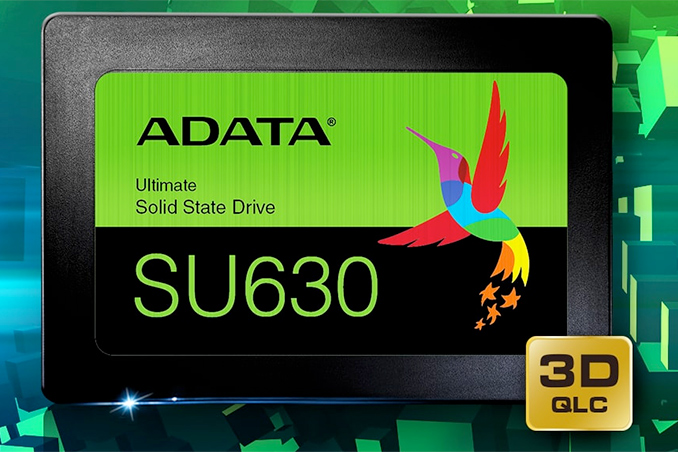
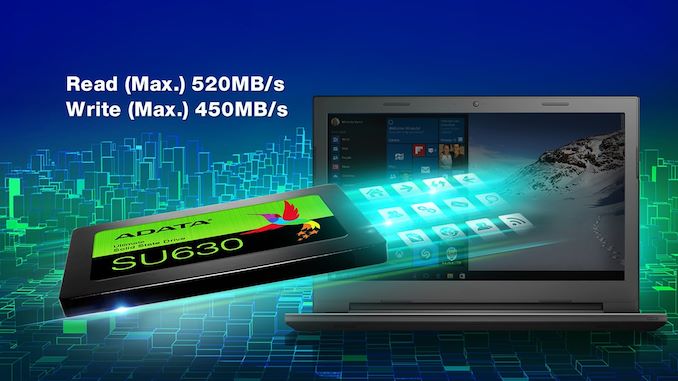


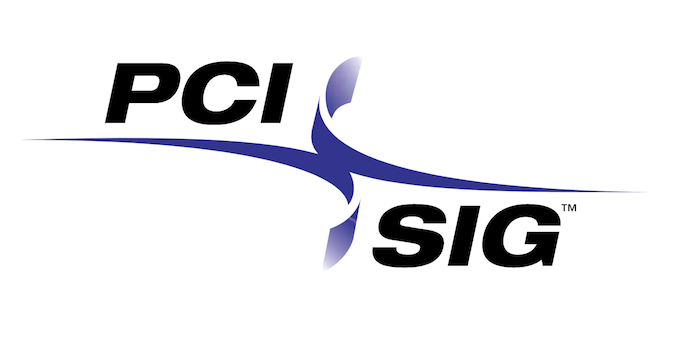
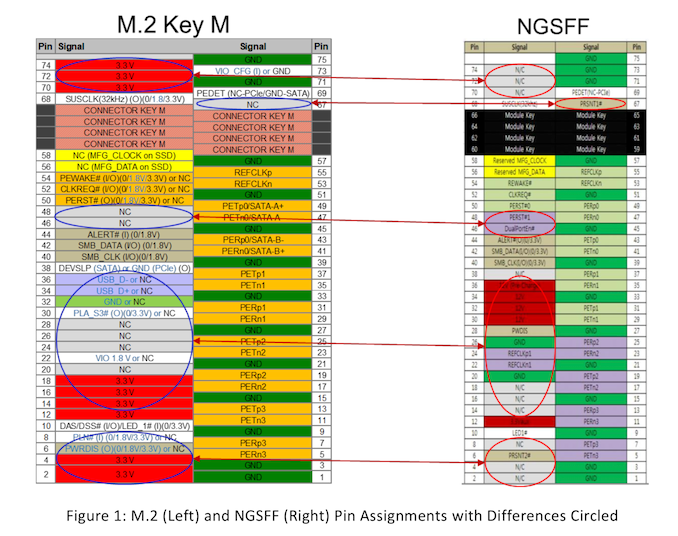


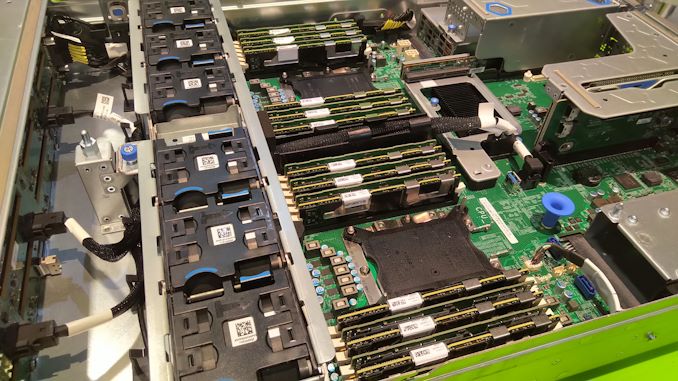
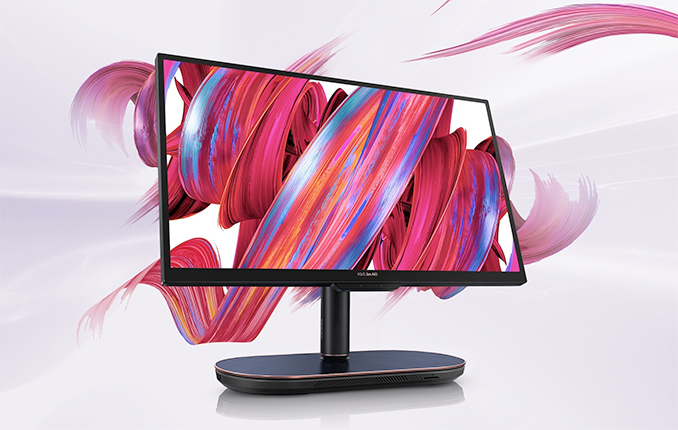
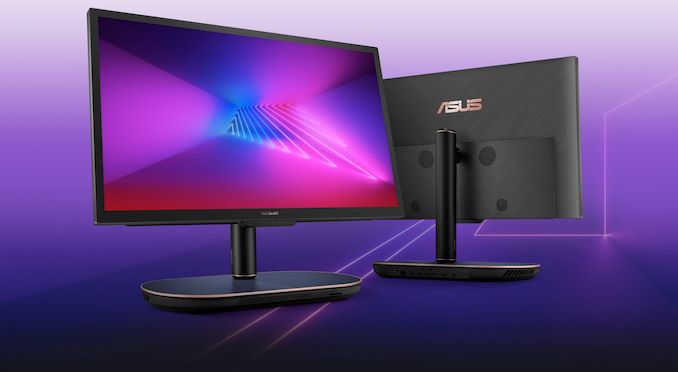
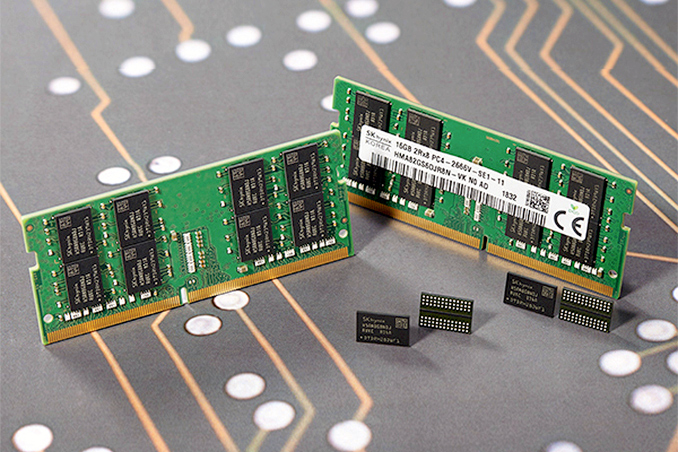
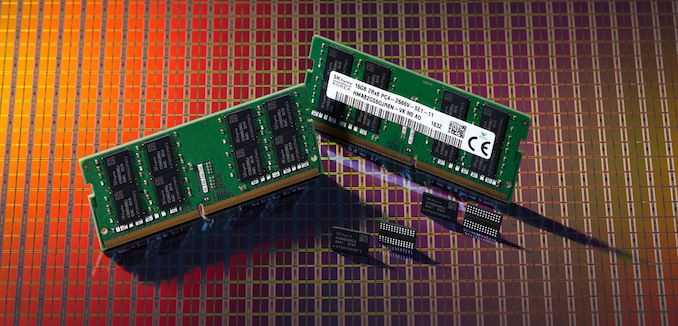
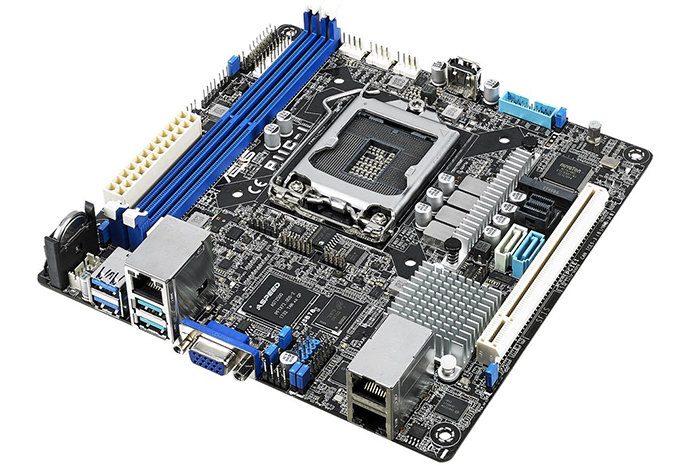
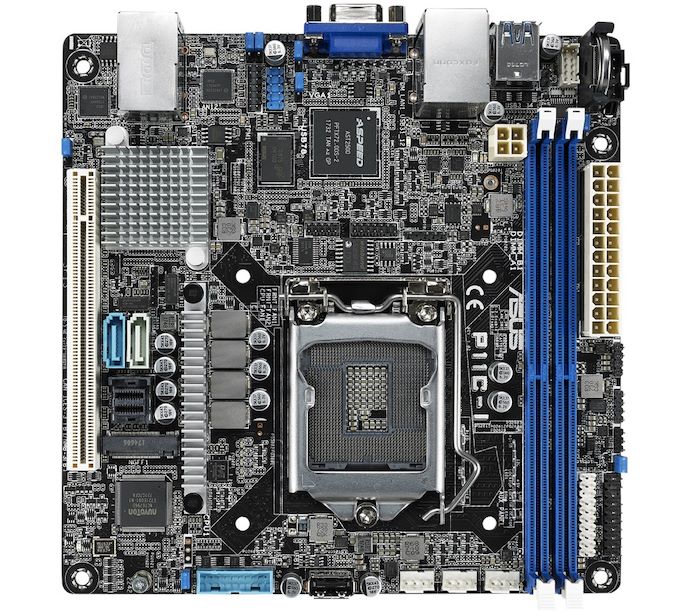

















Bookmarks